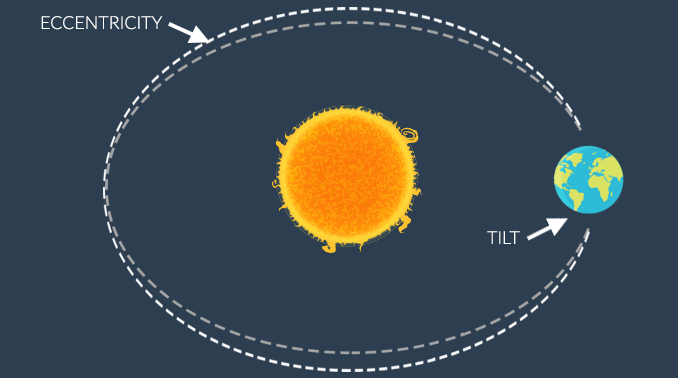Surviving the Ice Age
Man, early human beings were resilient. Your parents may complain about how easy kids have it these days but even they don't know what it was like for our ancestors to live through an actual Ice Age! Human beings have survived around two Ice Ages, and these major glacial events actually had a major impact on human adaptation and the development of civilisation... but first, let's dig into what an Ice Age actually is, and how it comes about.
 |
| Your ancestors showing you the route they took to get to school. |
2.58 million years ago, the Earth entered the Quaternary period, and throughout these millions of years, the Earth has been cycling between glacial and interglacial periods. With a large enough drop in global temperatures, glacial events see large parts of the Earth hijacked by ice sheets, as conditions allow glaciers to advance across the land, accompanied by a drop in sea levels. Conversely, interglacial periods occur between glacial periods - as the name implies - when temperatures warm up, and ice sheets are forced to retreat, resulting in a rise in sea levels as the ice sheets melt.
 |
| If you can't take the heat... then don't be made of ice. |
Fascinatingly, this glacial-interglacial cycle is actually strongly influenced by fluctuations in the tilt of the Earth on its axis, and the way in which the Earth orbits the sun. Earth's orbit around the sun - known as eccentricity - does not take the shape of a perfect circle, and so there are times during this orbit when the Earth is further away from the sun than it would normally be. This affects the amount and quality of solar radiation the Earth receives, thus resulting in drops in temperature, which can aid glaciation. The Earth's axial tilt - known as obliquity - can also aid or impede glaciation, as a smaller tilt results in less seasonal variations, meaning that the snowfall of winter may not be melted by the heat of summer, allowing for more snow and ice to accumulate, culminating in a glacial event. Such glacial and interglacial events last thousands of years and can have a major impact on life on Earth.
 |
| There's no joke for this, it's just a genuinely helpful diagram |
Human beings pretty similar to us lived through glacial events like the ones described above, navigating frozen continents, and forging tools and technologies that they used to carve the path to modern civilisation. Conditions were harsh, competition fierce, but humans adapted. Weapons were carved from bone, allowing human beings to compete and hunt prey much larger than themselves, but one of the most impactful tools early humans invented was not a weapon - and it is a tool we still use today. That tool was: the needle.
The invention of the needle allowed human beings to take their prey's skin and make clothes out of it, tailoring it to fit their bodies and protect them from the intense weather. Human beings made up for their biological shortfalls by developing technology that would allow them to not only compete with other lifeforms during this time, but to ultimately outlive them.
 |
| Fur coats are so last glacial event. |
Early humans also found shelter in caves such as the "Garden of Eden" near Cape Town, South Africa. Humans used animal hides to build tents and buffers for the winds, modifying these cavernous shelters to fit their needs. In terms of travelling, as was previously mentioned, sea levels drop during a glacial event, and as a result, early humans were able to navigate to different continents without crossing massive oceans. Australia and Asia were just a canoe ride away, while early humans could simply walk across a land bridge from Asia to America. This majorly impacted the way in which humans were dispersed across Earth.
Comments
Post a Comment